
Historically speaking, the United States is new to the wine game. Remains of a winery discovered in Armenia have been dated to around 4100 B.C. and the first winery in France was established in the year 1000 — while winemaking in what is now the United States began only in 1783, at the San Juan Capistrano Mission in California. (Not surprisingly, the Old World dominates our list of the best wines in the world according to the experts.)
The Mission produced wine for sacramental purposes, and didn’t sell it to the public. The first commercial winery in the country, opened in 1799, was the appropriately named First Vineyard outside Lexington, Kentucky. Though it was revived in the early years of this century, the original operation didn’t last past the mid-1800s. On the other hand, the Brotherhood Winery in Washingtonville, New York, vintage 1839, has remained open since its founding, making it the oldest continuously operating winery in America.
New York and especially Kentucky may not be the first places you think of when you think of winemaking, but today there are wineries in every one of the 50 states. Even Hawaii, even Alaska, have wineries — though in the latter case, the wines are based on berries or on grape juice imported from other states. In many other parts of the country, too, fruit other than grapes is used or wine is made from native American or French-American hybrid grapes, not familiar European varieties like merlot or chardonnay. (Wine isn’t always involved, of course, but these are the drunkest states in America.)
The nation’s undisputed wine capital remains California, which produces almost 90% of all the wine made in America, and boasts more than 6,000 wineries. The state with the second-most number of wineries, Oregon, has a mere 1,389 — though it has more wineries per capita than any other state, so is No. 1 on our list.
Click here to see the states with the most (and fewest) wineries
24/7 Tempo has compiled and ranked a list of the number of bonded wineries per capita in every state. Those numbers, as well as the total number of wineries in each state, are based on data published by VinePair, a digital media company producing content related to wine and other alcoholic beverages. VinePair drew the data from the Alcohol and Tobacco Tax and Trade Bureau.
A bonded winery is one producing wine under a bond guaranteeing payment of federal excise taxes. Most American wineries are bonded, but according to the Protecting Americans from Tax Hikes Act of 2015, any producer owing less than $50,000 per year in taxes will no longer be required to maintain a wine bond, so the actual number of wineries around the country is probably larger than this data indicates.

50. Mississippi
> Wineries per capita: 0.4 per 100,000 people
> Total number of wineries: 11 — the lowest
> Population: 2,976,149 — 17th lowest
[in-text-ad]
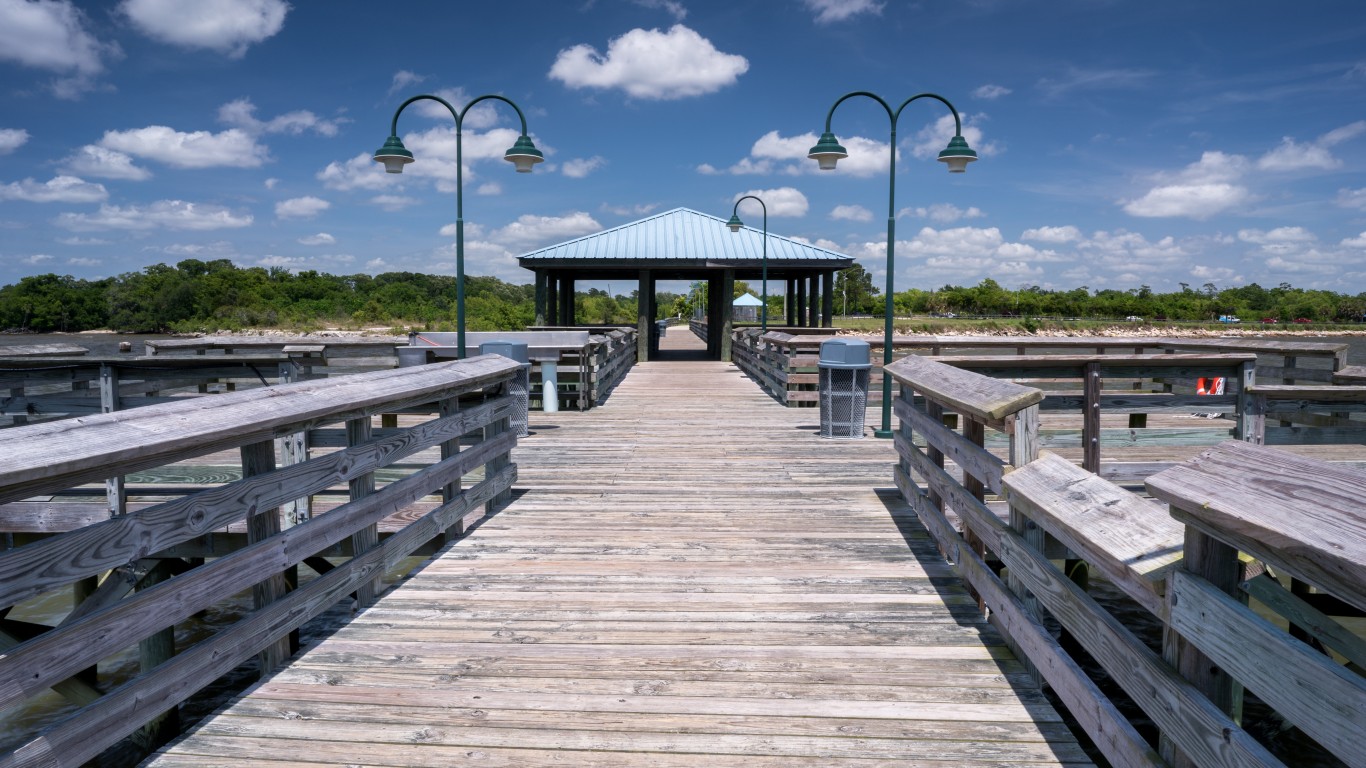
49. Louisiana
> Wineries per capita: 0.5 per 100,000 people
> Total number of wineries: 22 — 5th lowest
> Population: 4,648,794 — 25th highest

48. Utah
> Wineries per capita: 0.7 per 100,000 people
> Total number of wineries: 23 — 6th lowest
> Population: 3,205,958 — 21st lowest
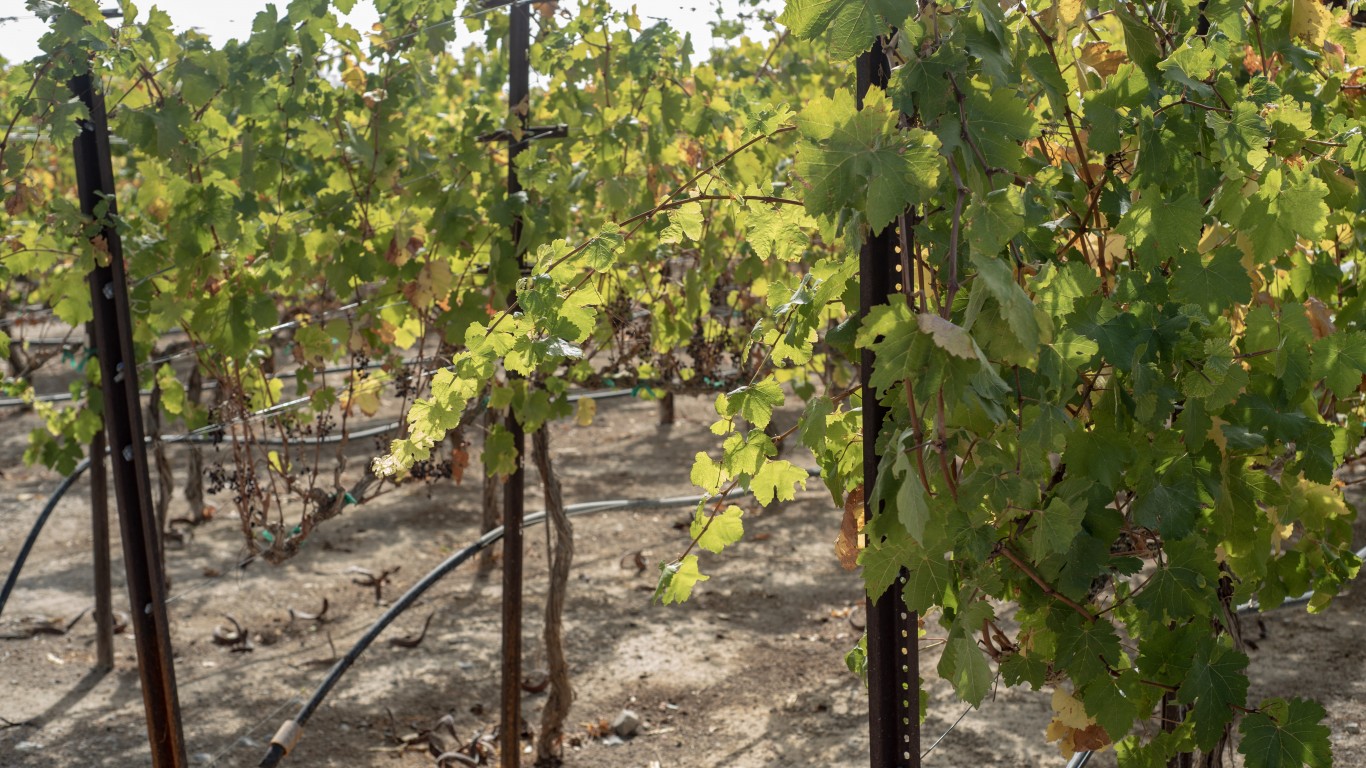
47. Nevada
> Wineries per capita: 0.8 per 100,000 people
> Total number of wineries: 24 — 8th lowest
> Population: 3,080,156 — 19th lowest
[in-text-ad-2]
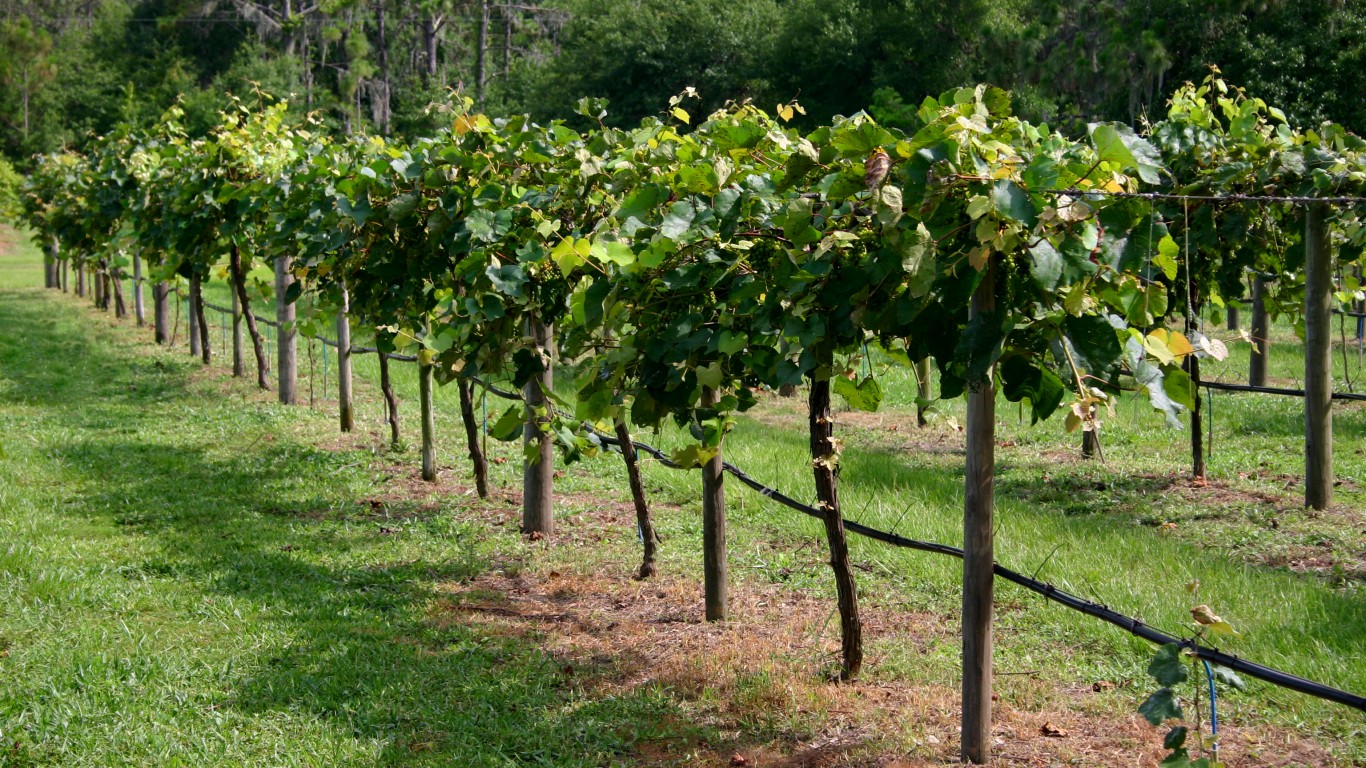
46. Florida
> Wineries per capita: 0.9 per 100,000 people
> Total number of wineries: 193 — 15th highest
> Population: 21,477,737 — 3rd highest
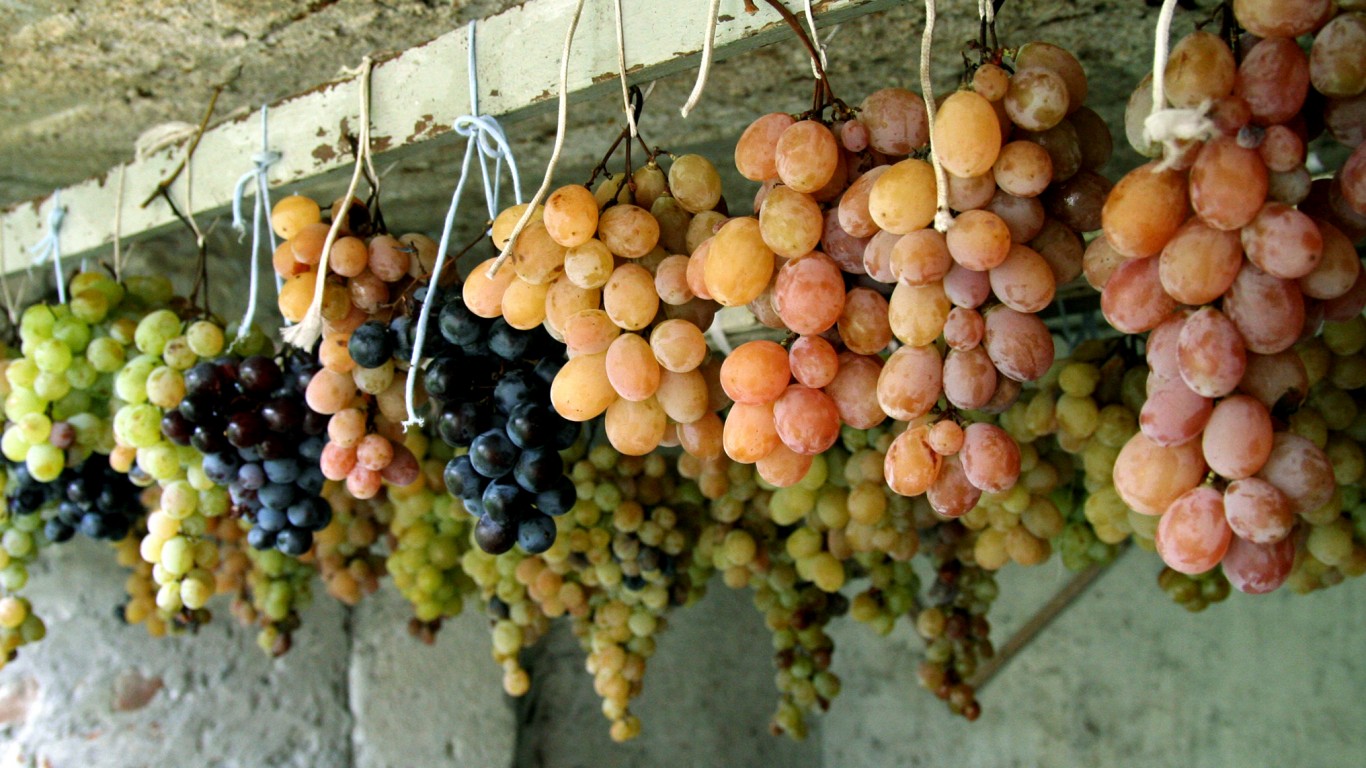
45. South Carolina
> Wineries per capita: 1.1 per 100,000 people
> Total number of wineries: 54 — 16th lowest
> Population: 5,148,714 — 23rd highest
[in-text-ad]

44. New Jersey
> Wineries per capita: 1.1 per 100,000 people
> Total number of wineries: 100 — 24th lowest
> Population: 8,882,190 — 11th highest

43. Delaware
> Wineries per capita: 1.2 per 100,000 people
> Total number of wineries: 12 — 3rd lowest
> Population: 973,764 — 6th lowest
42. Alabama
> Wineries per capita: 1.2 per 100,000 people
> Total number of wineries: 62 — 17th lowest
> Population: 4,903,185 — 24th highest
[in-text-ad-2]

41. Hawaii
> Wineries per capita: 1.2 per 100,000 people
> Total number of wineries: 18 — 4th lowest
> Population: 1,415,872 — 11th lowest

40. Arkansas
> Wineries per capita: 1.3 per 100,000 people
> Total number of wineries: 38 — 11th lowest
> Population: 3,017,804 — 18th lowest
[in-text-ad]
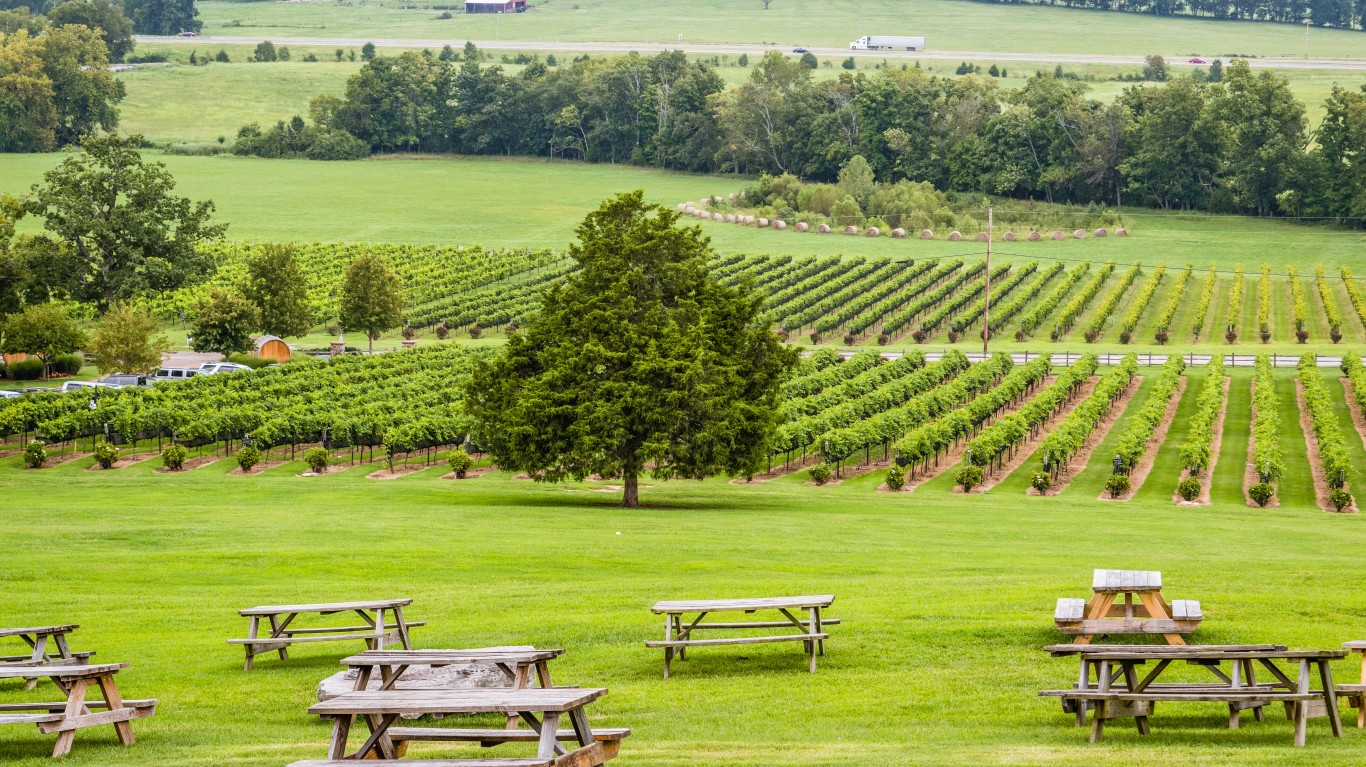
39. Tennessee
> Wineries per capita: 1.4 per 100,000 people
> Total number of wineries: 97 — 23rd lowest
> Population: 6,829,174 — 16th highest
38. Georgia
> Wineries per capita: 1.5 per 100,000 people
> Total number of wineries: 159 — 19th highest
> Population: 10,617,423 — 8th highest
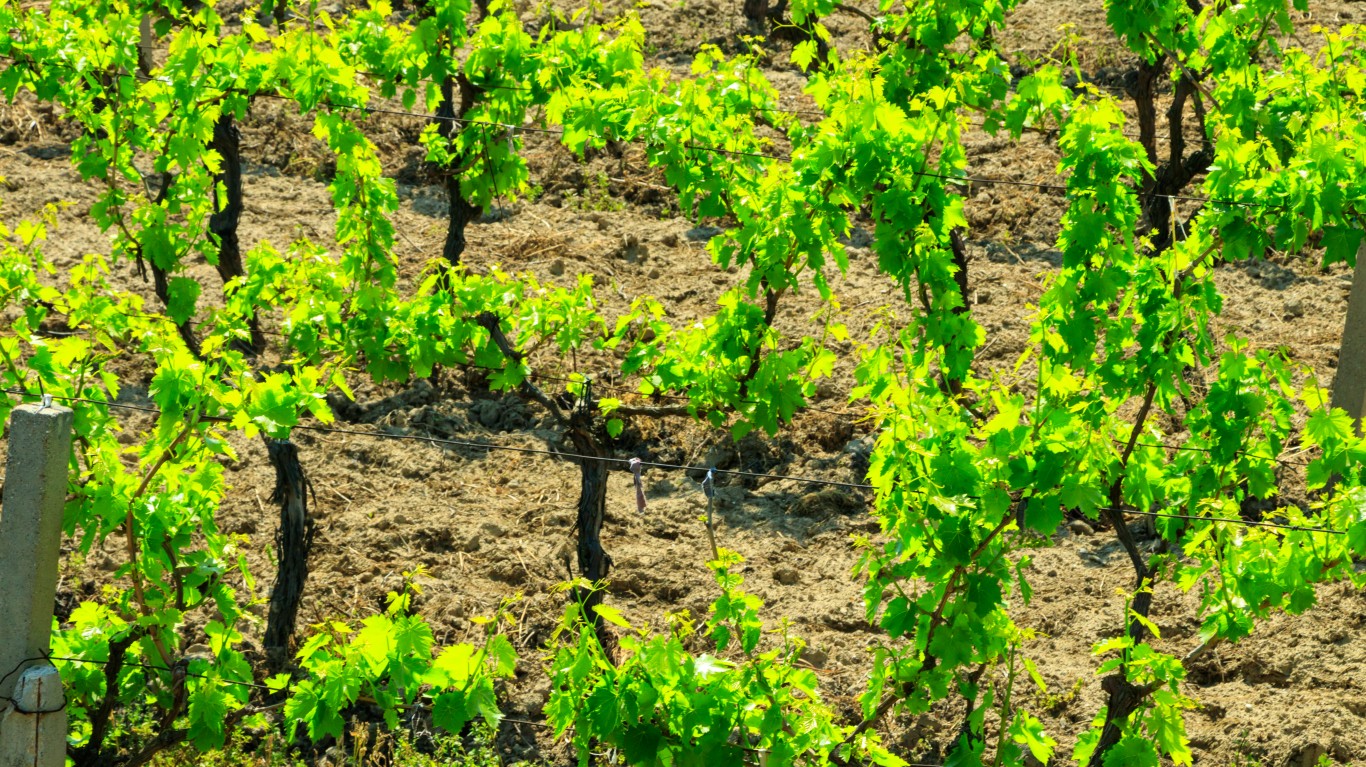
37. Illinois
> Wineries per capita: 1.5 per 100,000 people
> Total number of wineries: 194 — 14th highest
> Population: 12,671,821 — 6th highest
[in-text-ad-2]
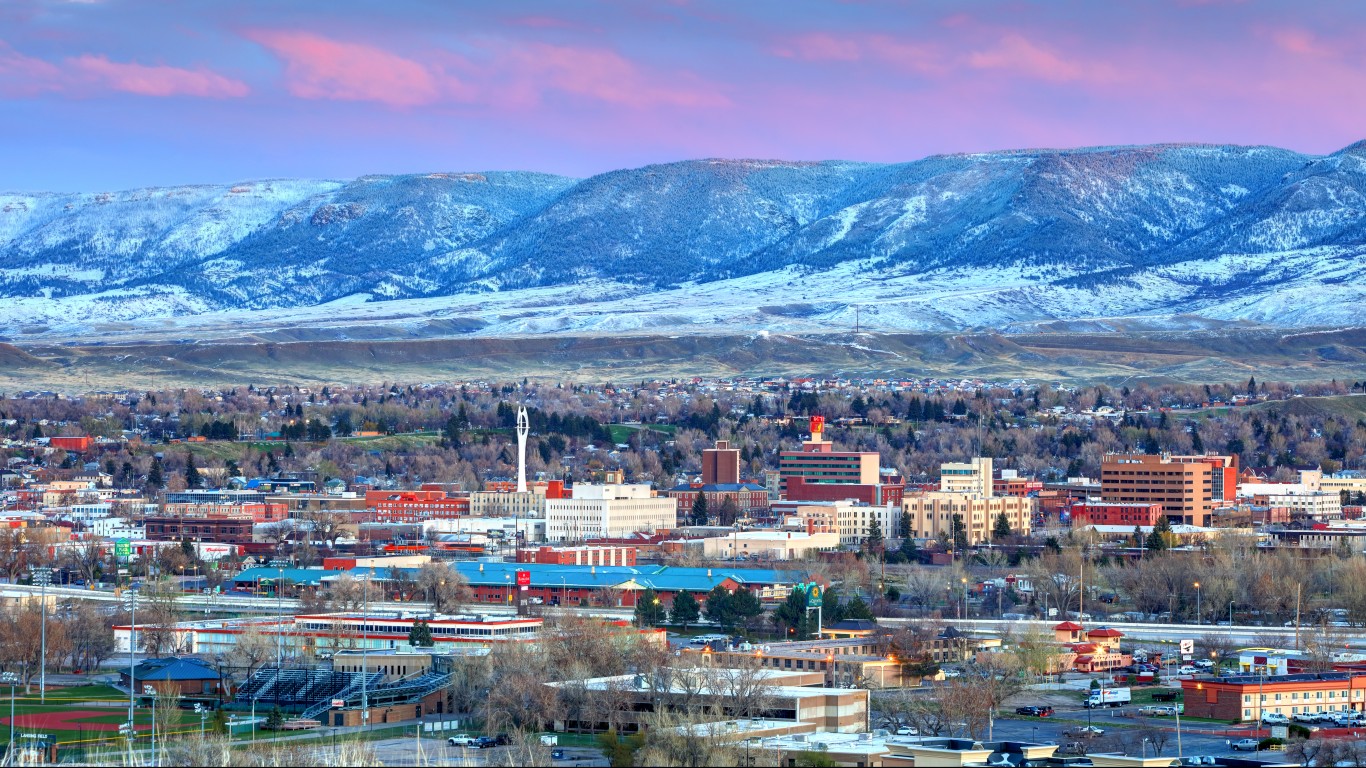
36. Wyoming
> Wineries per capita: 2.1 per 100,000 people
> Total number of wineries: 12 — 3rd lowest
> Population: 578,759 — the lowest

35. Alaska
> Wineries per capita: 2.2 per 100,000 people
> Total number of wineries: 24 — 8th lowest
> Population: 731,545 — 3rd lowest
[in-text-ad]

34. West Virginia
> Wineries per capita: 2.2 per 100,000 people
> Total number of wineries: 40 — 12th lowest
> Population: 1,792,147 — 13th lowest
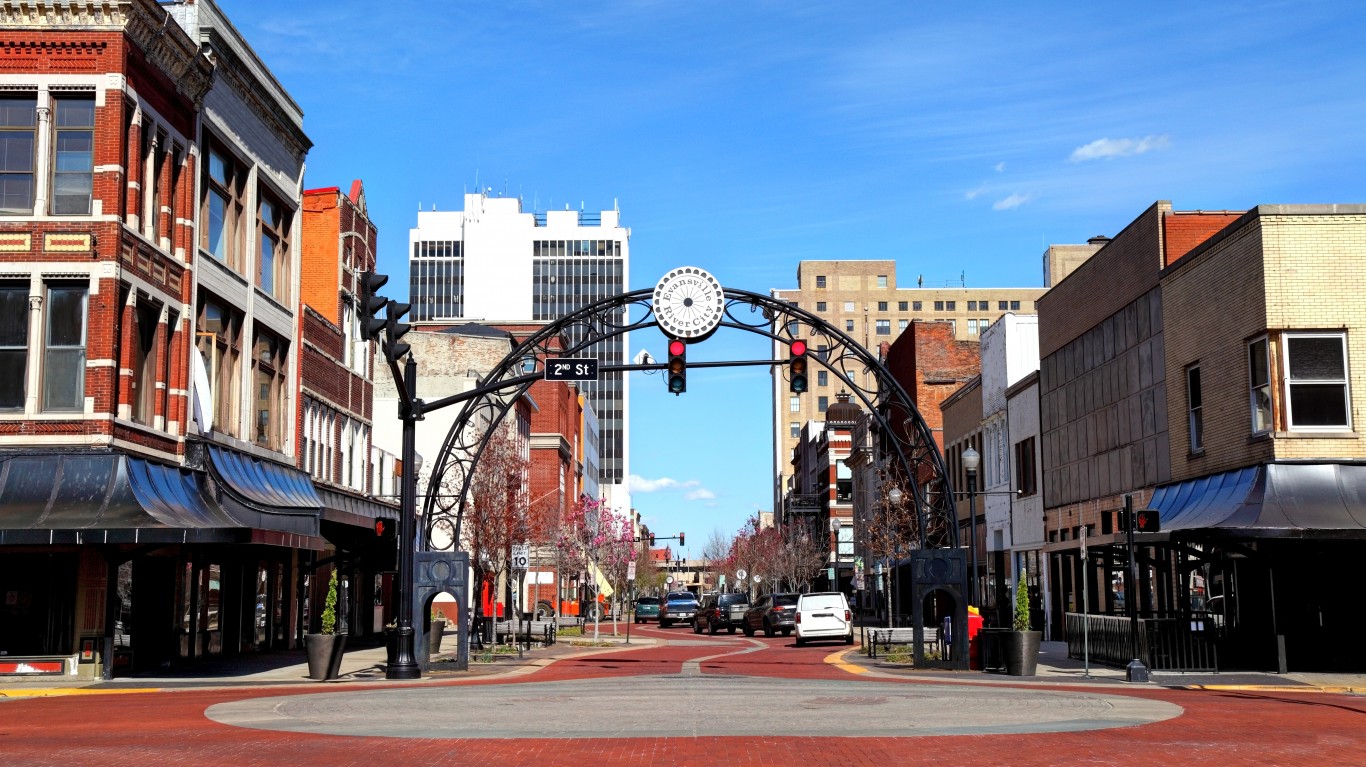
33. Indiana
> Wineries per capita: 2.2 per 100,000 people
> Total number of wineries: 152 — 21st highest
> Population: 6,732,219 — 17th highest

32. Nebraska
> Wineries per capita: 2.3 per 100,000 people
> Total number of wineries: 45 — 15th lowest
> Population: 1,934,408 — 14th lowest
[in-text-ad-2]

31. Massachusetts
> Wineries per capita: 2.4 per 100,000 people
> Total number of wineries: 165 — 18th highest
> Population: 6,892,503 — 15th highest
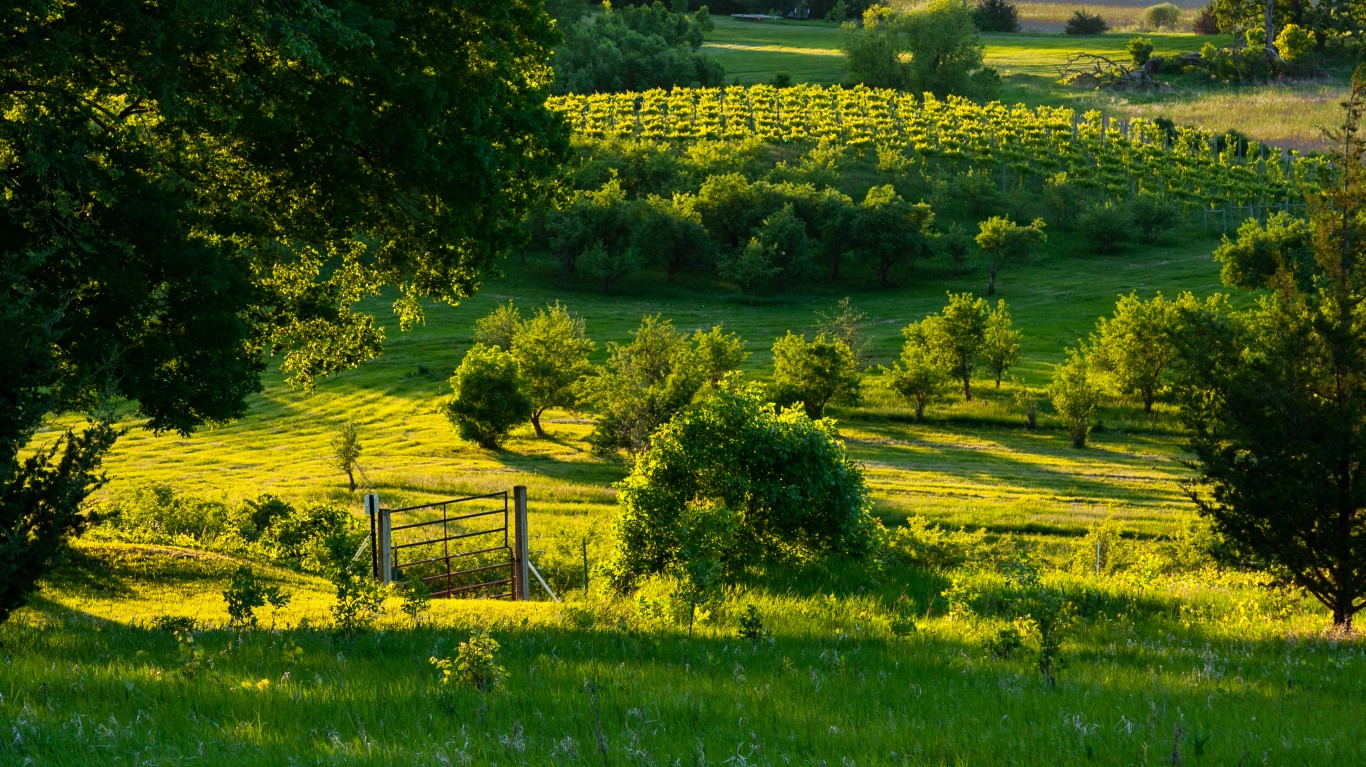
30. Minnesota
> Wineries per capita: 2.6 per 100,000 people
> Total number of wineries: 147 — 22nd highest
> Population: 5,639,632 — 22nd highest
[in-text-ad]
29. Kansas
> Wineries per capita: 2.7 per 100,000 people
> Total number of wineries: 78 — 19th lowest
> Population: 2,913,314 — 16th lowest
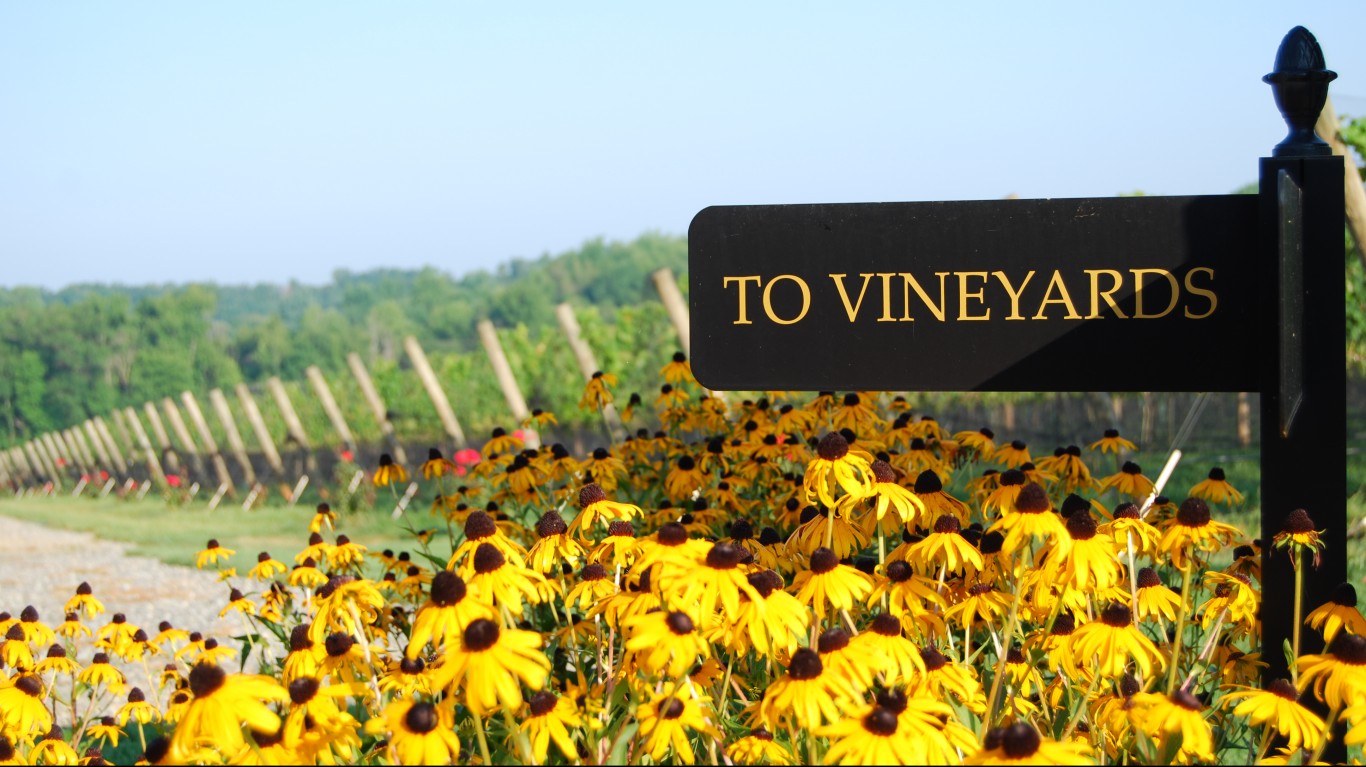
28. North Carolina
> Wineries per capita: 2.7 per 100,000 people
> Total number of wineries: 278 — 11th highest
> Population: 10,488,084 — 9th highest
27. Connecticut
> Wineries per capita: 2.7 per 100,000 people
> Total number of wineries: 96 — 22nd lowest
> Population: 3,565,287 — 22nd lowest
[in-text-ad-2]

26. Oklahoma
> Wineries per capita: 2.9 per 100,000 people
> Total number of wineries: 113 — 25th highest
> Population: 3,956,971 — 23rd lowest
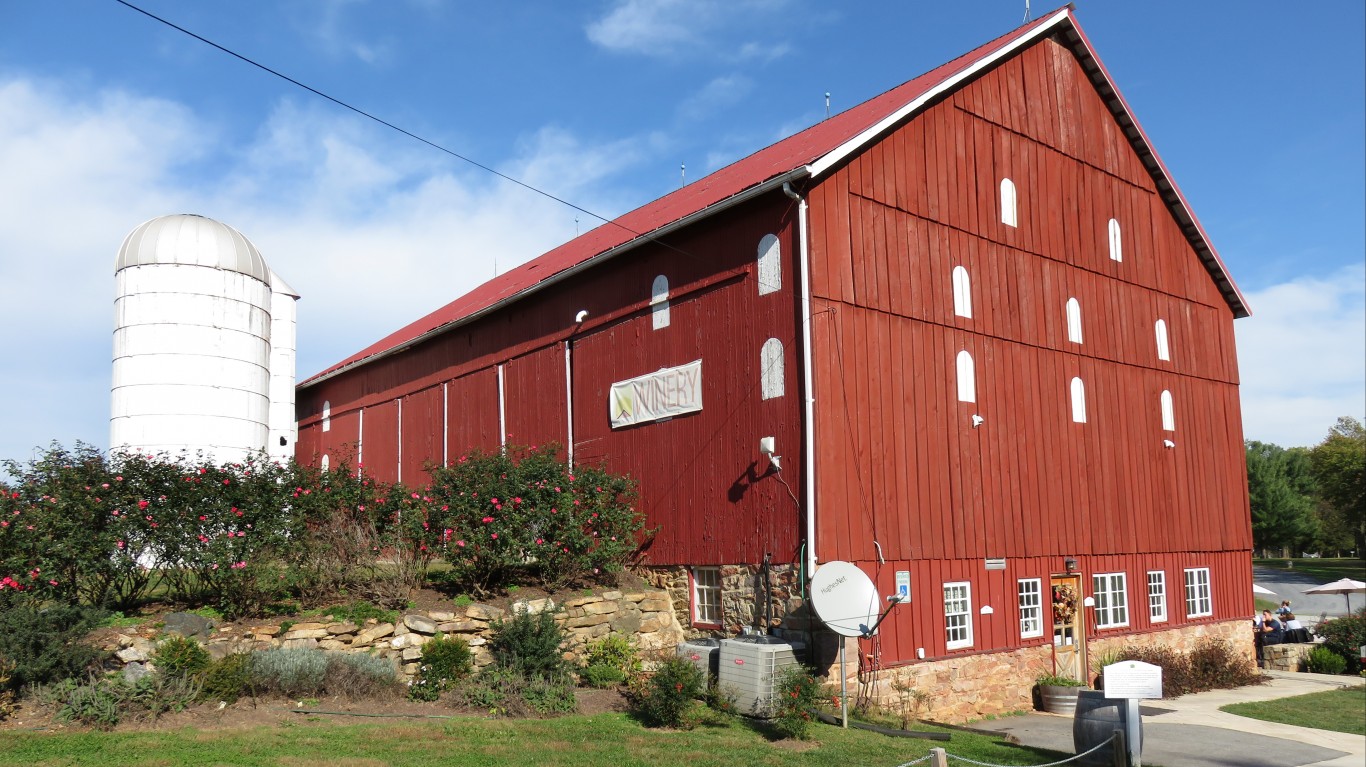
25. Maryland
> Wineries per capita: 2.9 per 100,000 people
> Total number of wineries: 181 — 16th highest
> Population: 6,045,680 — 19th highest
[in-text-ad]

24. Kentucky
> Wineries per capita: 3.0 per 100,000 people
> Total number of wineries: 133 — 23rd highest
> Population: 4,467,673 — 25th lowest
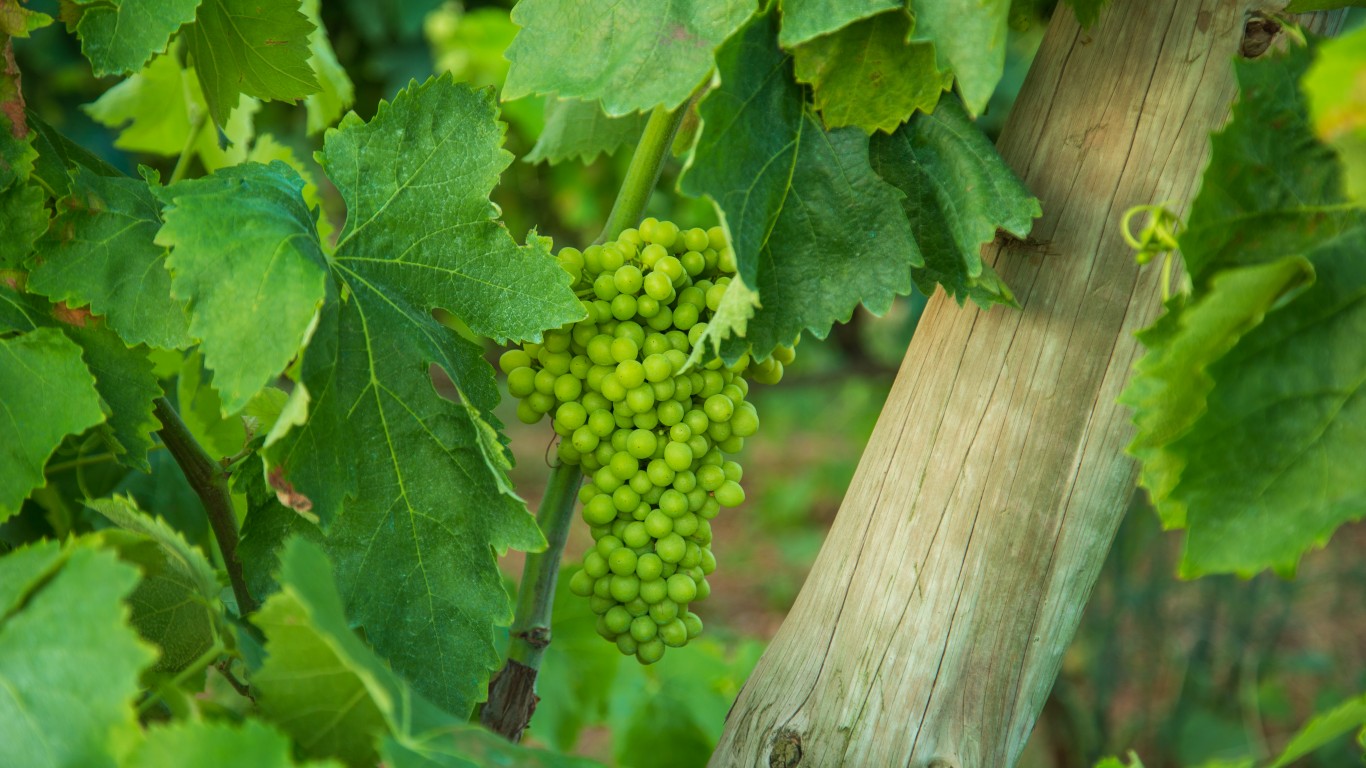
23. Rhode Island
> Wineries per capita: 3.0 per 100,000 people
> Total number of wineries: 33 — 10th lowest
> Population: 1,059,361 — 7th lowest

22. North Dakota
> Wineries per capita: 3.2 per 100,000 people
> Total number of wineries: 25 — 9th lowest
> Population: 762,062 — 4th lowest
[in-text-ad-2]
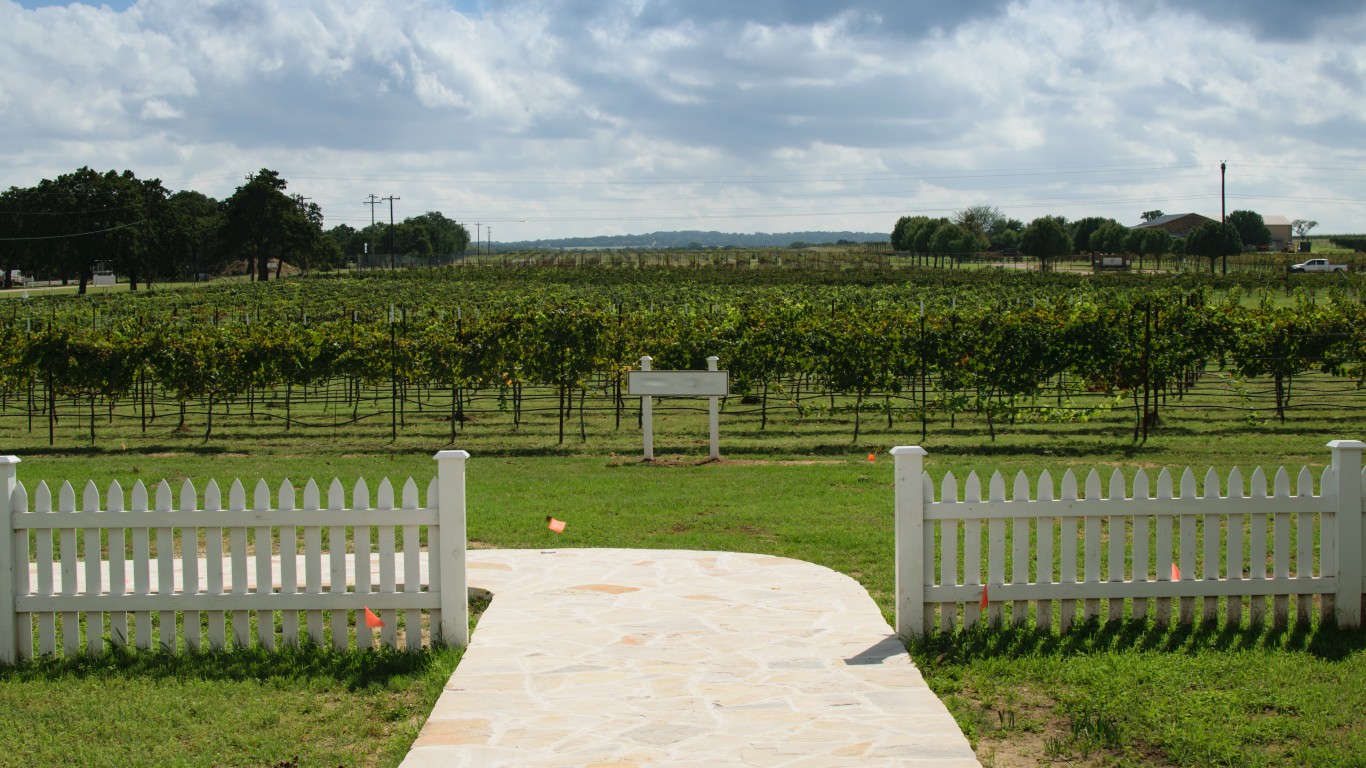
21. Texas
> Wineries per capita: 3.3 per 100,000 people
> Total number of wineries: 947 — 3rd highest
> Population: 28,995,881 — 2nd highest
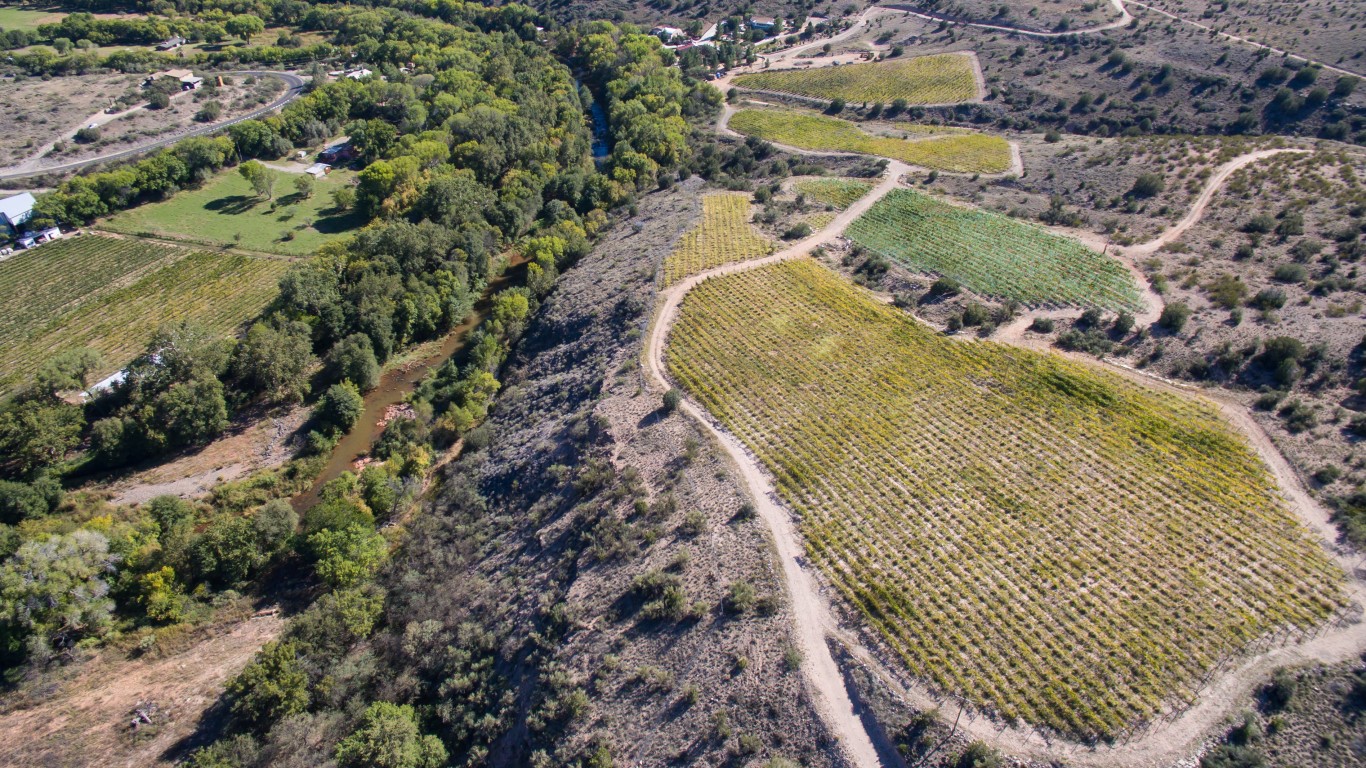
20. Arizona
> Wineries per capita: 3.3 per 100,000 people
> Total number of wineries: 159 — 19th highest
> Population: 7,278,717 — 14th highest
[in-text-ad]
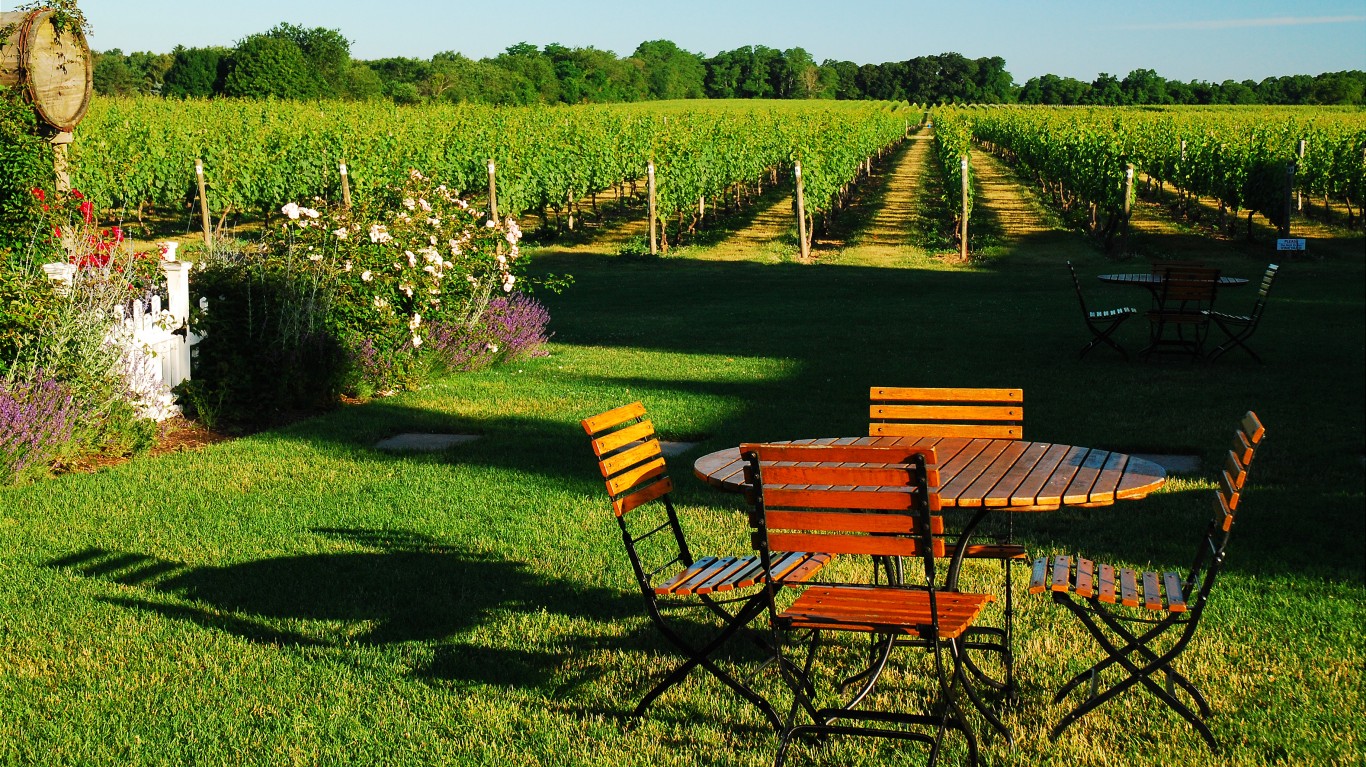
19. New York
> Wineries per capita: 3.7 per 100,000 people
> Total number of wineries: 749 — 5th highest
> Population: 19,453,561 — 4th highest
18. Wisconsin
> Wineries per capita: 3.8 per 100,000 people
> Total number of wineries: 222 — 13th highest
> Population: 5,822,434 — 20th highest

17. Montana
> Wineries per capita: 4.0 per 100,000 people
> Total number of wineries: 43 — 14th lowest
> Population: 1,068,778 — 8th lowest
[in-text-ad-2]
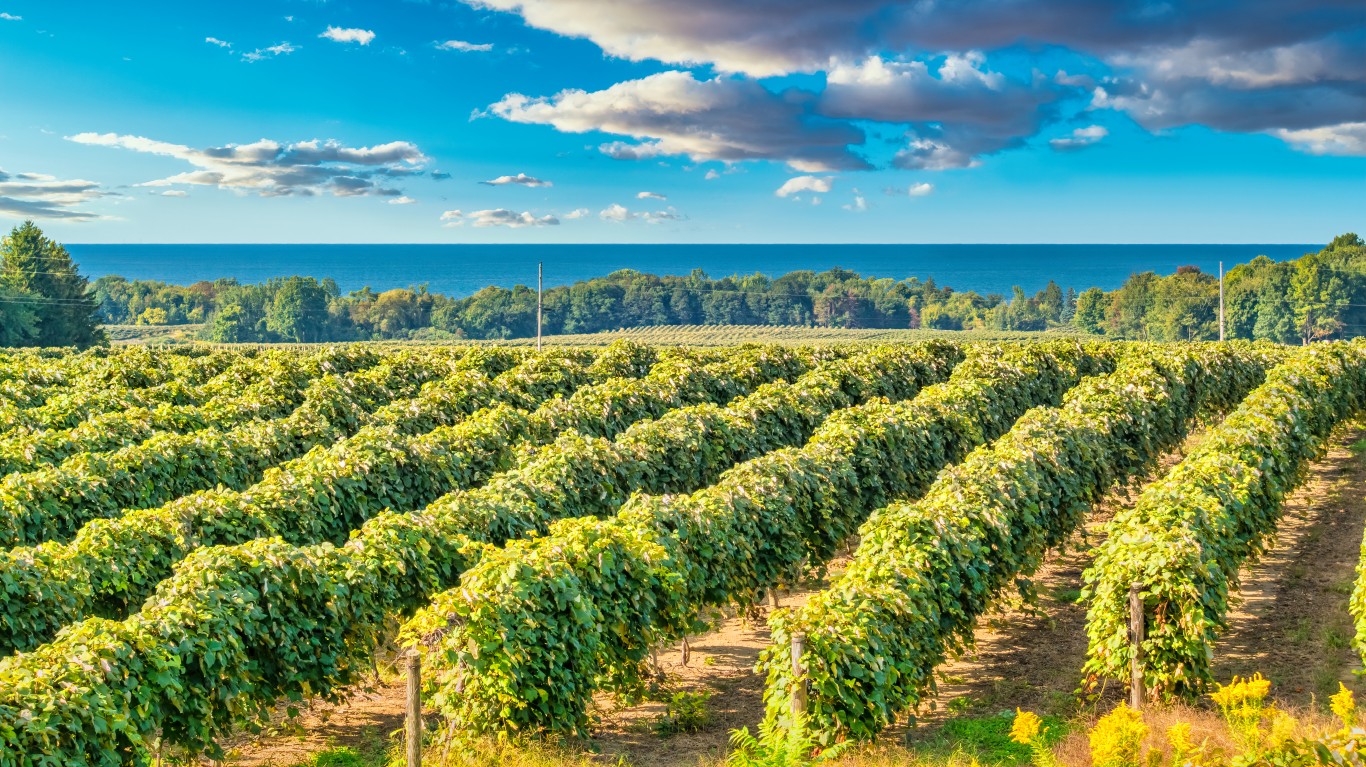
16. Pennsylvania
> Wineries per capita: 4.1 per 100,000 people
> Total number of wineries: 531 — 7th highest
> Population: 12,801,989 — 5th highest
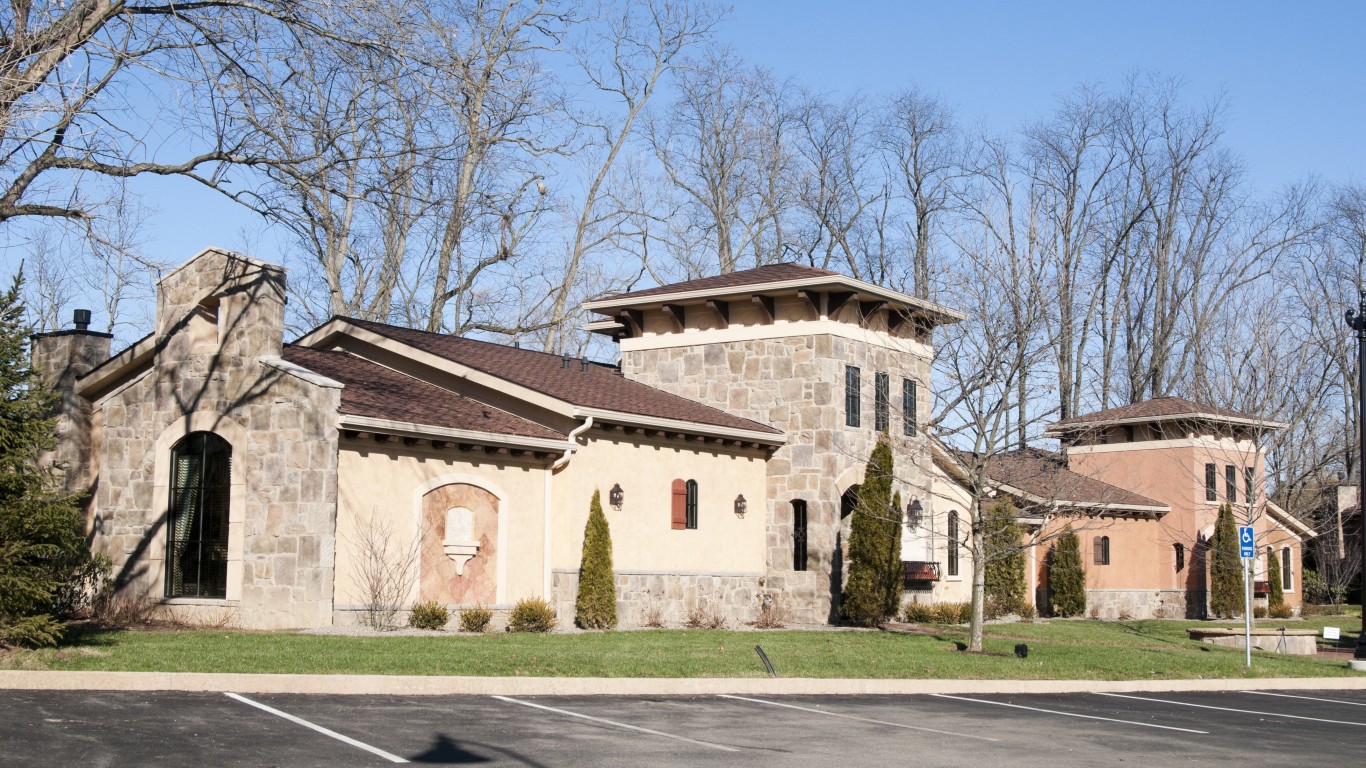
15. Ohio
> Wineries per capita: 4.1 per 100,000 people
> Total number of wineries: 486 — 9th highest
> Population: 11,689,100 — 7th highest
[in-text-ad]
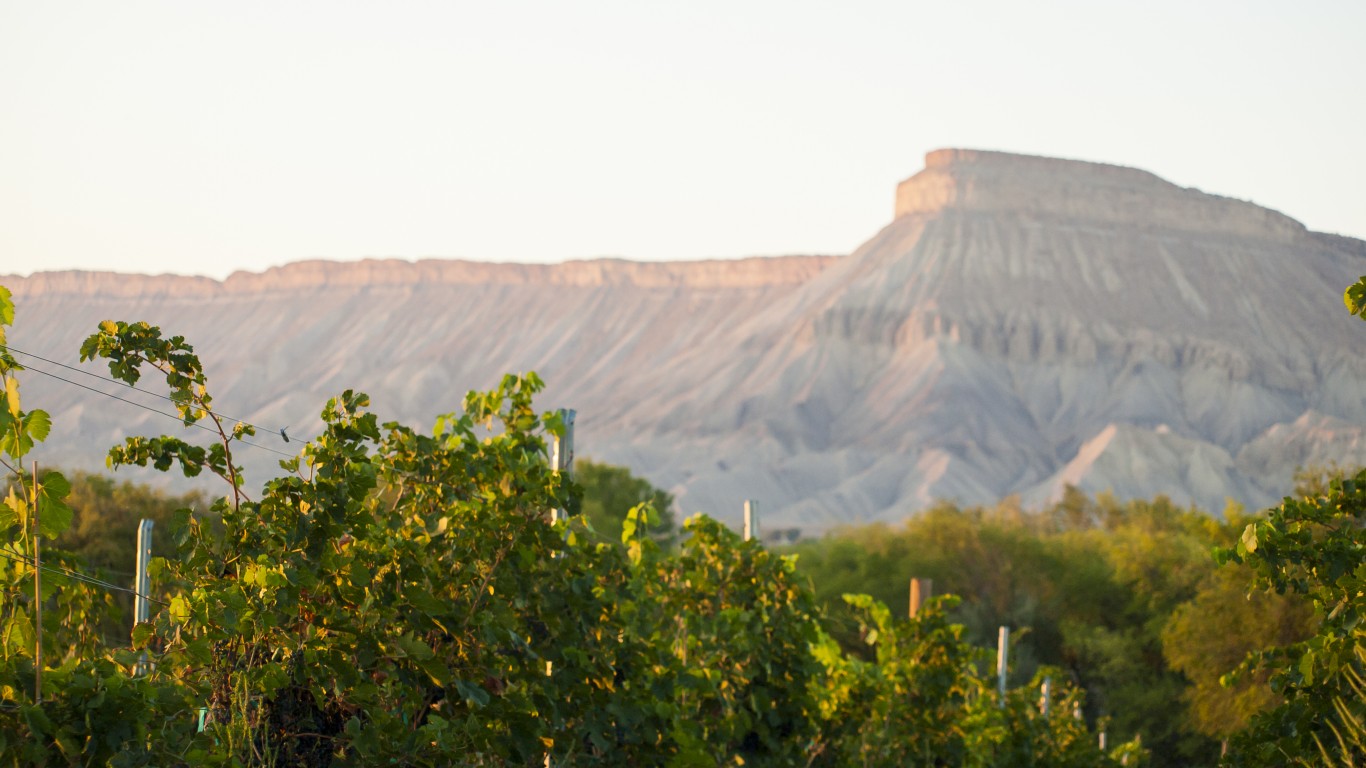
14. Colorado
> Wineries per capita: 4.3 per 100,000 people
> Total number of wineries: 249 — 12th highest
> Population: 5,758,736 — 21st highest
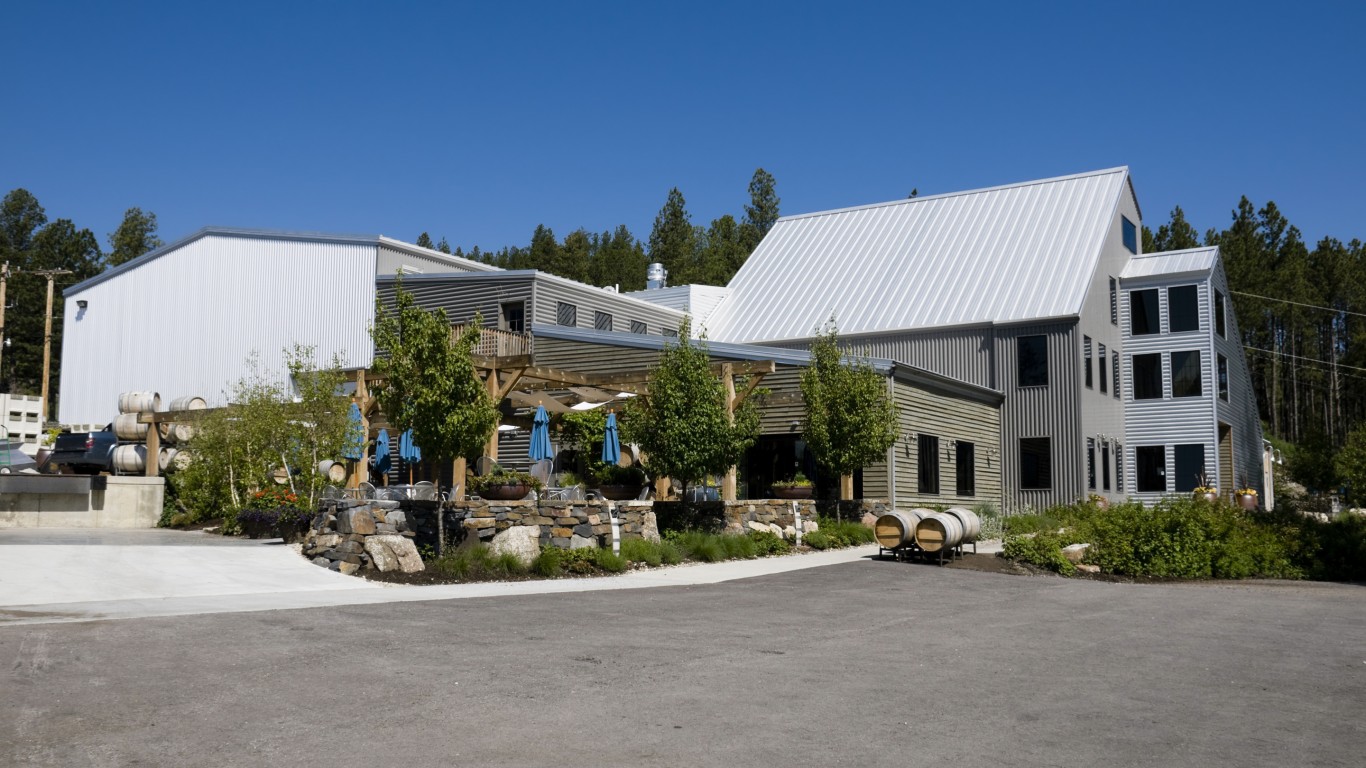
13. South Dakota
> Wineries per capita: 4.6 per 100,000 people
> Total number of wineries: 41 — 13th lowest
> Population: 884,659 — 5th lowest

12. Missouri
> Wineries per capita: 5.1 per 100,000 people
> Total number of wineries: 314 — 10th highest
> Population: 6,137,428 — 18th highest
[in-text-ad-2]

11. New Mexico
> Wineries per capita: 5.2 per 100,000 people
> Total number of wineries: 110 — 25th lowest
> Population: 2,096,829 — 15th lowest
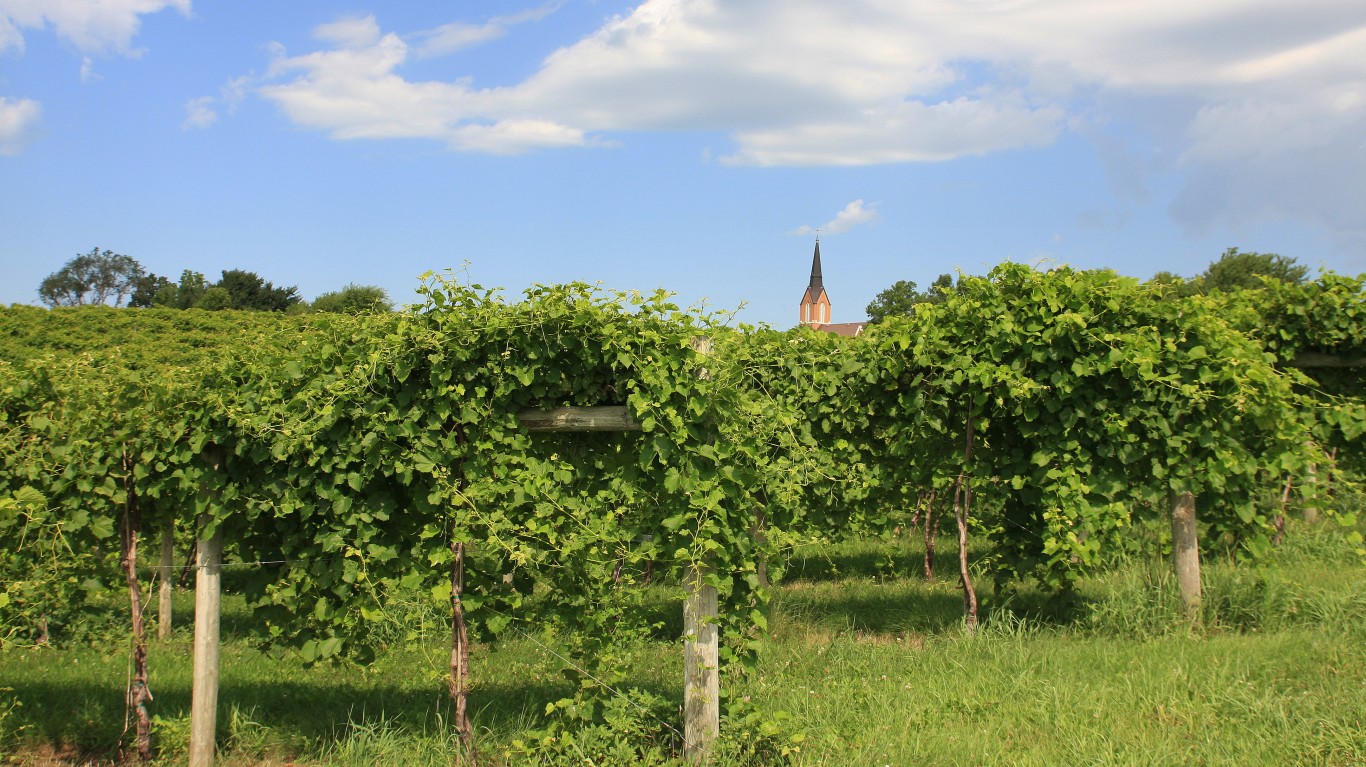
10. Iowa
> Wineries per capita: 5.3 per 100,000 people
> Total number of wineries: 172 — 17th highest
> Population: 3,155,070 — 20th lowest
[in-text-ad]

9. Maine
> Wineries per capita: 5.7 per 100,000 people
> Total number of wineries: 78 — 19th lowest
> Population: 1,344,212 — 9th lowest
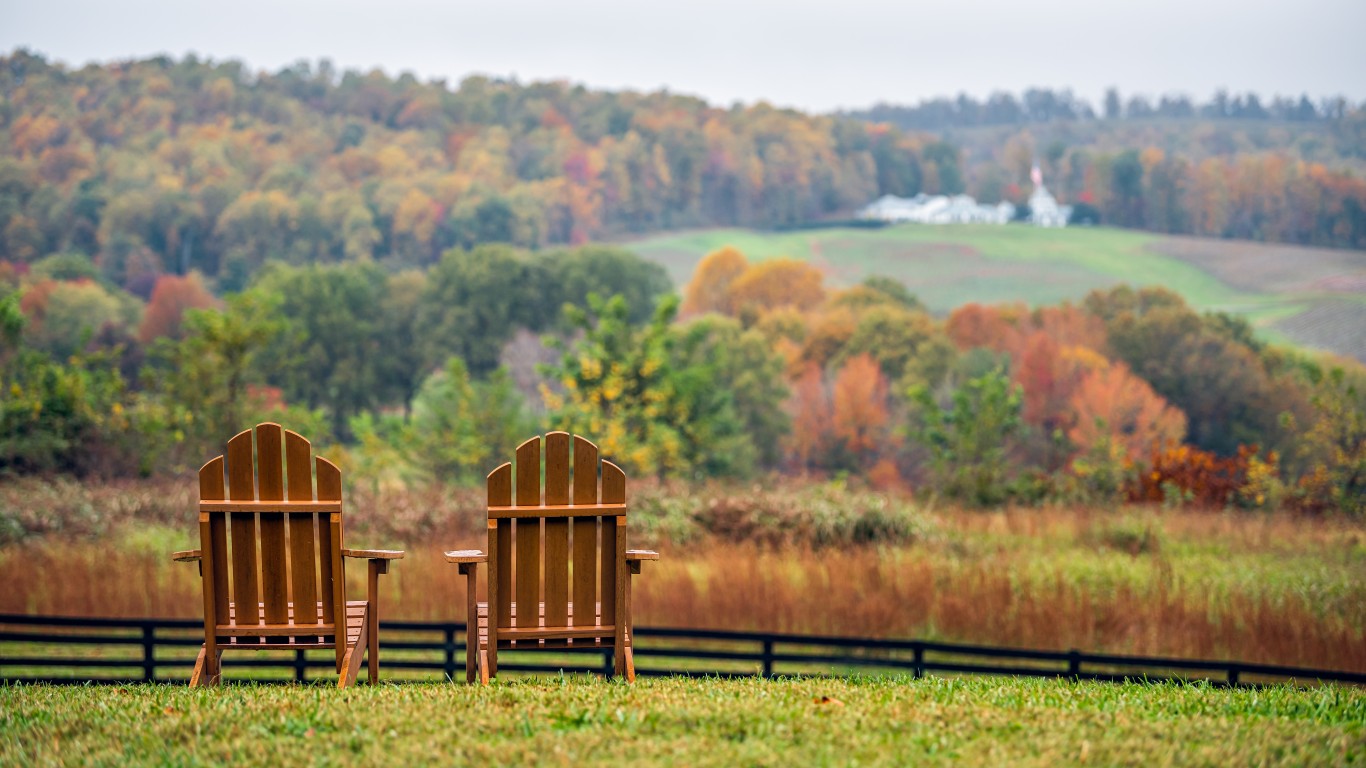
8. Virginia
> Wineries per capita: 5.8 per 100,000 people
> Total number of wineries: 497 — 8th highest
> Population: 8,535,519 — 12th highest
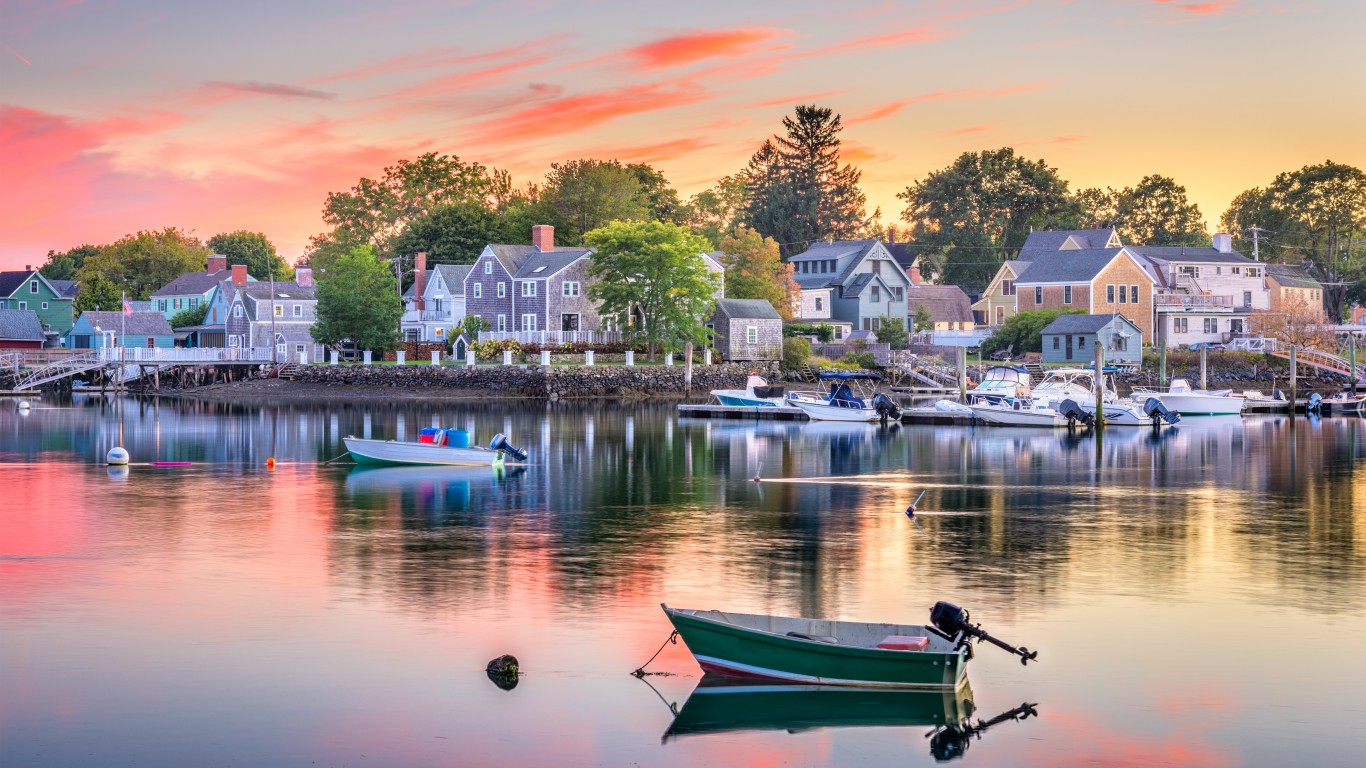
7. New Hampshire
> Wineries per capita: 5.8 per 100,000 people
> Total number of wineries: 80 — 20th lowest
> Population: 1,359,711 — 10th lowest
[in-text-ad-2]
6. Idaho
> Wineries per capita: 6.3 per 100,000 people
> Total number of wineries: 115 — 24th highest
> Population: 1,787,065 — 12th lowest

5. Michigan
> Wineries per capita: 6.5 per 100,000 people
> Total number of wineries: 657 — 6th highest
> Population: 9,986,857 — 10th highest
[in-text-ad]

4. Vermont
> Wineries per capita: 14.3 per 100,000 people
> Total number of wineries: 92 — 21st lowest
> Population: 623,989 — 2nd lowest
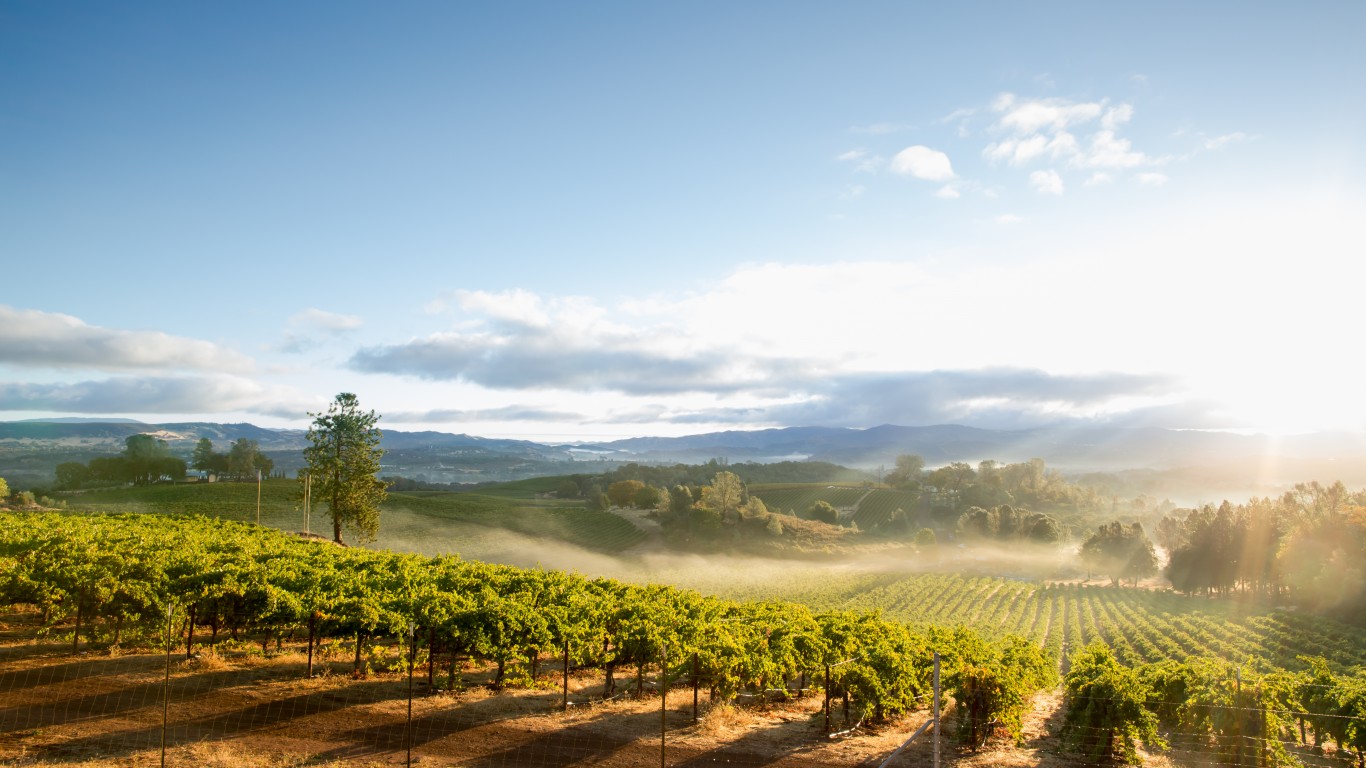
3. California
> Wineries per capita: 15.2 per 100,000 people
> Total number of wineries: 6,010 — the highest
> Population: 39,512,223 — the highest

2. Washington
> Wineries per capita: 18.0 per 100,000 people
> Total number of wineries: 1,389 — 2nd highest
> Population: 7,614,893 — 13th highest
[in-text-ad-2]

1. Oregon
> Wineries per capita: 21.6 per 100,000 people
> Total number of wineries: 917 — 4th highest
> Population: 4,217,737 — 24th lowest
The Average American Has No Idea How Much Money You Can Make Today (Sponsor)
The last few years made people forget how much banks and CD’s can pay. Meanwhile, interest rates have spiked and many can afford to pay you much more, but most are keeping yields low and hoping you won’t notice.
But there is good news. To win qualified customers, some accounts are paying almost 10x the national average! That’s an incredible way to keep your money safe and earn more at the same time. Our top pick for high yield savings accounts includes other benefits as well. You can earn up to 3.80% with a Checking & Savings Account today Sign up and get up to $300 with direct deposit. No account fees. FDIC Insured.
Click here to see how much more you could be earning on your savings today. It takes just a few minutes to open an account to make your money work for you.
Our top pick for high yield savings accounts includes other benefits as well. You can earn up to 4.00% with a Checking & Savings Account from Sofi. Sign up and get up to $300 with direct deposit. No account fees. FDIC Insured.
Thank you for reading! Have some feedback for us?
Contact the 24/7 Wall St. editorial team.
 24/7 Wall St.
24/7 Wall St.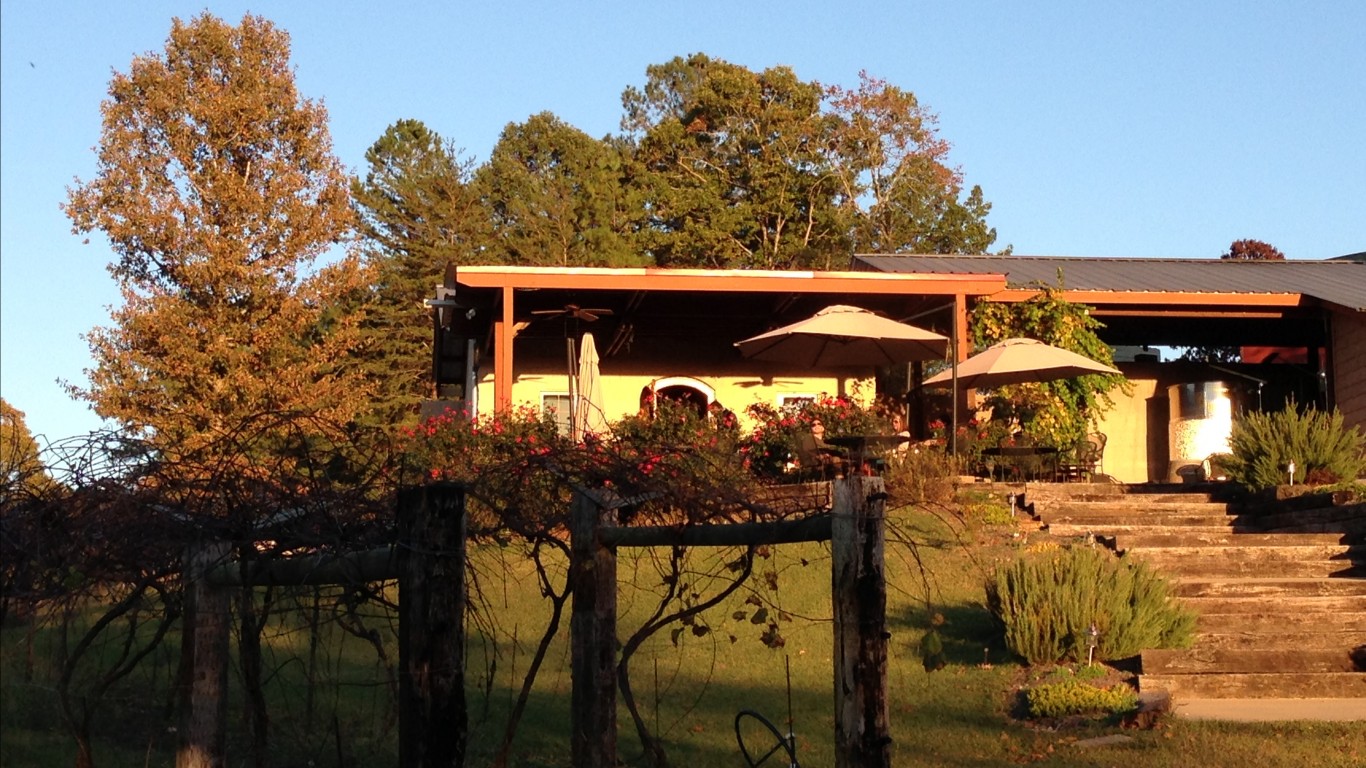
 24/7 Wall St.
24/7 Wall St.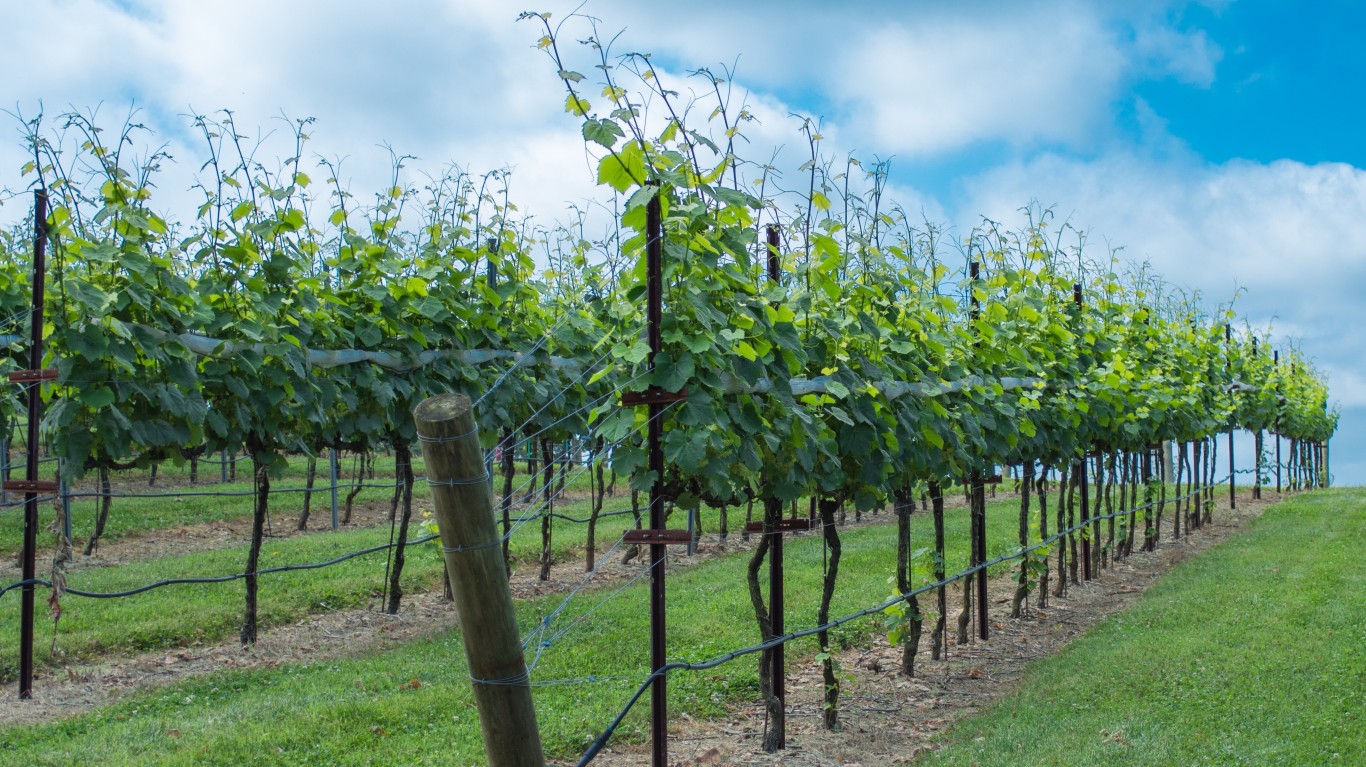
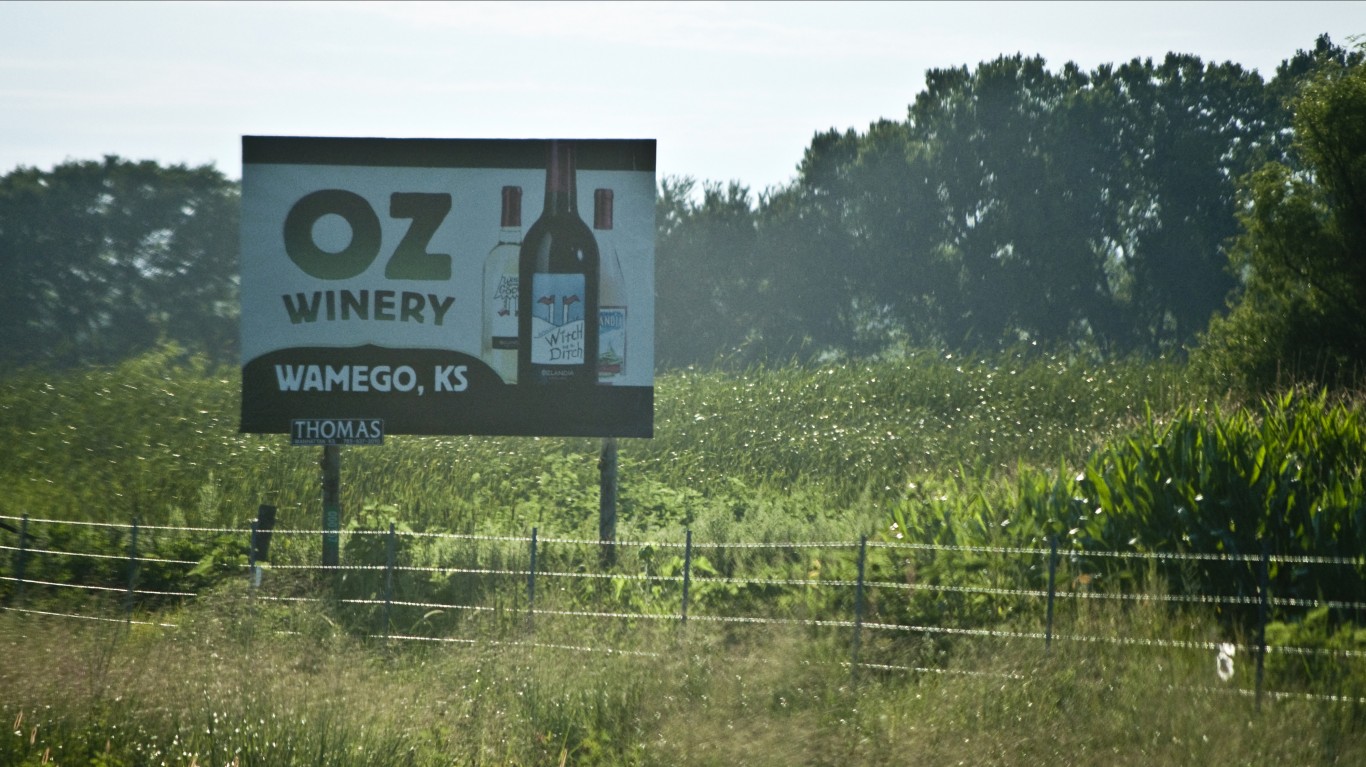

 24/7 Wall St.
24/7 Wall St.
 24/7 Wall St.
24/7 Wall St.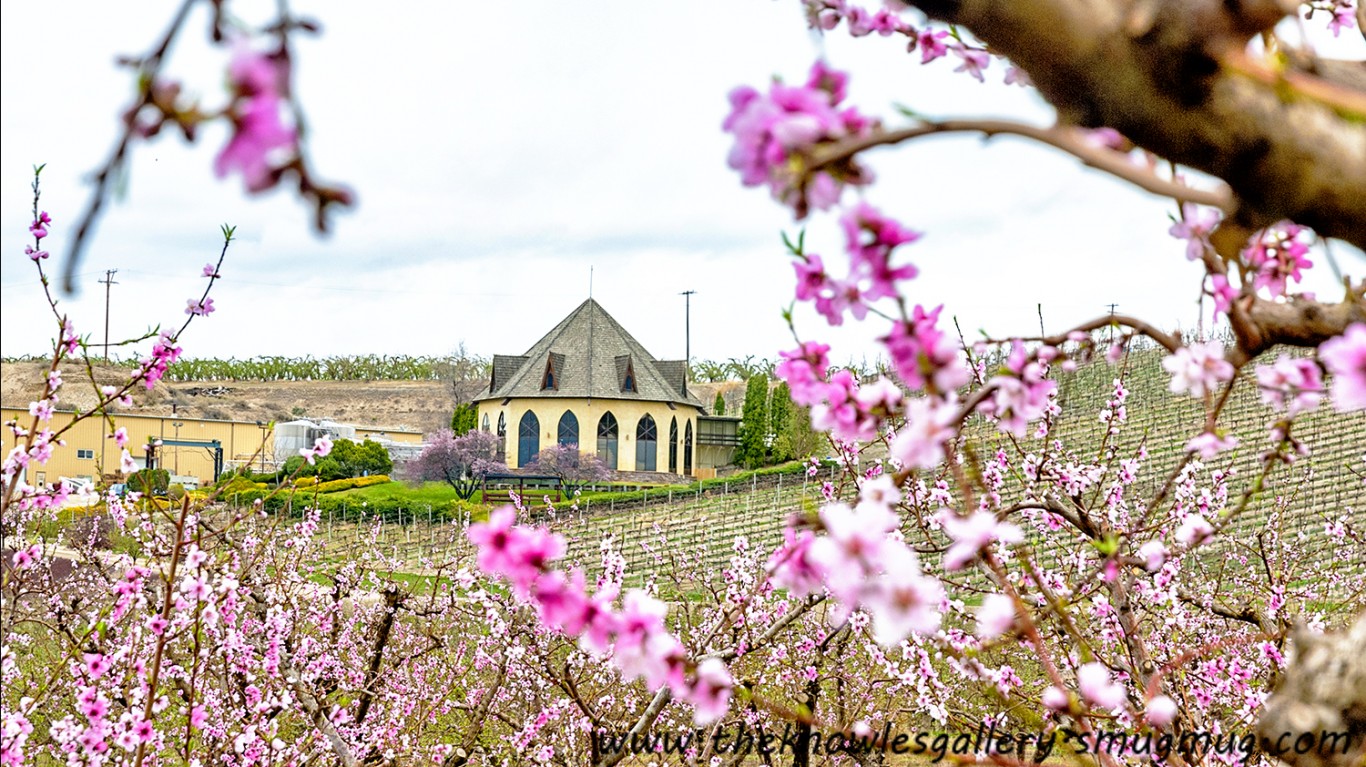
 24/7 Wall St.
24/7 Wall St.

